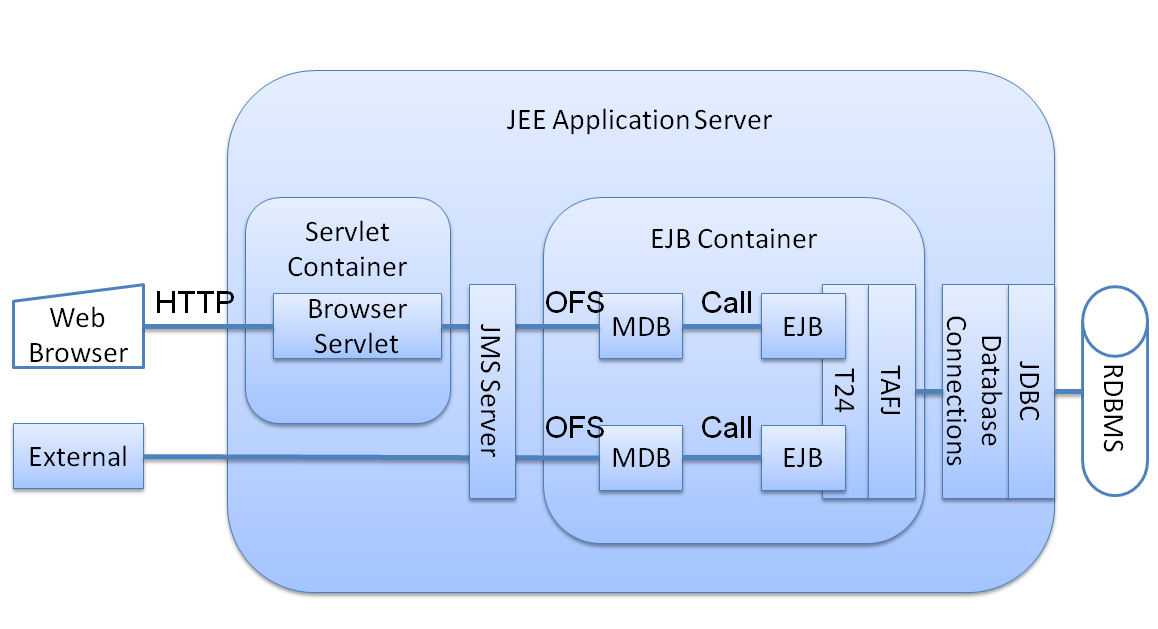Overview
This section provides the types of channels used for transact processing, global architecture and the files involved in MDB and EJB mapping.
Two different types of channels based on JMS request or reply queues are used in Temenos Transact JAVA deployment:
|
Channel |
Description |
|---|---|
|
OFS Request/Reply |
Configured or instantiated by default for OFS, Browser, TWS, ARCMOB, TCIB, AML, IRIS, SEAT, and so on. |
|
CALLAT Request/Reply |
Initialises a TAFJ Session with JF.INITIALIZE and does a CALL @ with parameters. |
The following diagram illustrates the global architecture of the online transact processing.

The workflow is as follows:
- TAFJ defines MDBs to listen on JMS Queues and consume JMS messages for JMS Request or Reply channels
- MDB calls the corresponding to process the Temenos Transact request
- EJB response is passed to the MDB which sends a response back to a reply queue
Each channel defines its own set of parameters—OFS source, timeout, transaction model, error handling parameters and so on. The MDB or EJB is configured using the standard JEE file ejb-jar.xml and following application server specific files.
- jboss-ejb3.xml - jBoss
- ibm-ejb-jar-bnd.xml - IBM
- WebLogic-ejb-jar.xml - WebLogic.
For each MDB or EJB, you can maps an application resource name (logical name) and a specific application server name (physical name – jndi name). For example, the logical name for the Temenos Transact datasource is jdbc/t24DataSource irrespective of the deployment. The physical name or JNDI name is specific to each application server provider.That is, ejb-jar.xml declares the logical name jdbc/t24DataSource which is mapped to the JNDI name java:/jdbc/t24DS in jboss-ejb3.xml for JBoss 6EAP.
These files are packaged in the META-INF folder of TAFJJEE_MDB.jar and TAFJJEE_EJB.jar.
In this topic